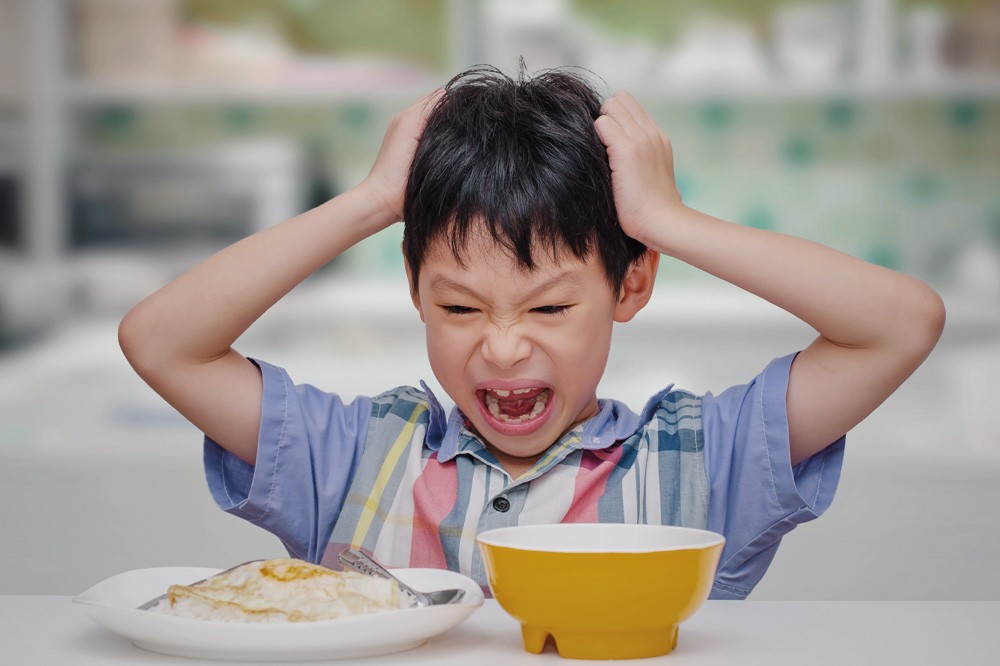Article of the Week
Top Reasons to Implement a GFCF Diet
Why does my child need a Gluten-Free, Casein-Free Diet? There are several reasons why parents should consider a gluten-free, casein-free…

All content of this article was created for informational purposes only and is not intended to be a substitute for professional advice, diagnosis, or treatment. Always seek the advice of your physician, therapist, or other qualified health provider with any questions or concerns you may have.
Kids with autism can be extremely selective when it comes to eating. An estimated 46–89% of children with autism spectrum disorder (ASD) have feeding problems. ASD children struggle with sensory defensiveness, a need for routine and sameness, and visual overstimulation which makes expanding the palate difficult. However, there is often more to this equation that needs to be sorted out in order to get our kids eating healthy and whole foods.
In this article, we will discuss causes of selective eating and measures to correct it. Then, we will offer tips to get your child to try more foods.

If we understand what causes picky eating, then we can begin to address these issues and start to reverse the problem.
Many of our kids only like a certain texture, color or temperature food. However, once the following medical issues are addressed, this problem often resolves. A full work-up by a functional medicine doctor can help you identify what is causing the sensory problems.
This can present as an aversion to textures or even gagging on foods. Kids with this problem may have difficulty moving food around their mouth causing them to be fearful about trying new foods. At least one in three children with autism has significant movement difficulties according to a 2019 study.
When there is difficulty with oral motor function, kids tend to want to drink their meals instead of chew them because it is easier. This is the child that wants to drink milk for every meal.
Feeding therapy and occupational therapy are both helpful in this instance.
When this is the case, kids will gag on foods. This may be due to many things including:
Picky eating can be a self-taught behavior in response to pain. Kids learn to be wary of food very quickly if eating food is associated with pain. According to this study, children with diseases of the upper gastrointestinal tract are more likely to develop feeding problems.
Sources of pain can include:
Mineral deficiency is a problem in many kids with autism and will only continue to get worse with continued selective eating. See this paper titled Macro- and MicroNutrient intakes in picky eaters: A Cause for Concern which tells us that intake of zinc and iron are below recommended levels in picky eaters.
Supplementing zinc can be particularly helpful. The major zinc protein in saliva is called gustin. Gustin influences your sense of taste. Because of this relationship between zinc and taste, and because taste and smell are so closely linked in human physiology, impaired sense of taste and smell are common symptoms of zinc deficiency.
Juicing fresh vegetables and fruits may be a solution to get active enzymes, vitamins and minerals into your child. You can start by syringing the juice into their mouth little by little.
Recent science has shown that some kids with autism may have a disorder called Cerebral Folate Deficiency which occurs when the folate in the blood is normal, but the folate in the brain is too low. This can cause many developmental problems including picky eating.
Properly treating CFD can make a difference in eating habits.
Find more information on CFD here.
When there is a fungal overgrowth in the GI tract, it can cause the child to crave grains, carbohydrates and sweets. These foods feed the pathogens and make the child less likely to want other types of foods.
The kid that craves bread, crackers, cookies, and sweets is probably dealing with fungal overgrowth in the gut.
See our article on yeast for more information on how to deal with it.
Yes! Our kids can actually be addicted to certain foods.
Sadly, most of the time, kids tend to crave the foods that they should not be eating.
Gluten and casein are very long chain peptides that are difficult to break down. If the child has intestinal permeability, also known as leaky gut, these large proteins are passing into the bloodstream where they react with opiate receptors. This makes the child want more of the food they are addicted to.
Addiction to particular foods may also happen because the child is eating foods that has highly addictive ingredients such as glutamic acid in the form of monosodium salt (MSG). This is why Doritos are so addictive. The brain is craving the MSG in them like a drug. Other top foods that have MSG are Ramen Noodles, Pringles, many seasonings and even deli meats.
PANS/PANDAS occurs when strep or other triggers such as Lyme or viruses trigger a misdirected immune response which results in inflammation in the brain. Two of the biggest symptoms are OCD and/or selective eating.
More information on PANS/PANDAS can be found here.
Why does my child need a Gluten-Free, Casein-Free Diet? There are several reasons why parents should consider a gluten-free, casein-free…
If your child is showing signs or symptoms of autism, it is important to have them screened. The sooner your child is…
The most common therapeutic interventions for autism are occupational therapy, speech therapy, physical therapy, and Applied Behavior Analysis. When exploring…
Autism is a clinical diagnosis, which means there is no lab test to determine whether or not a person has…